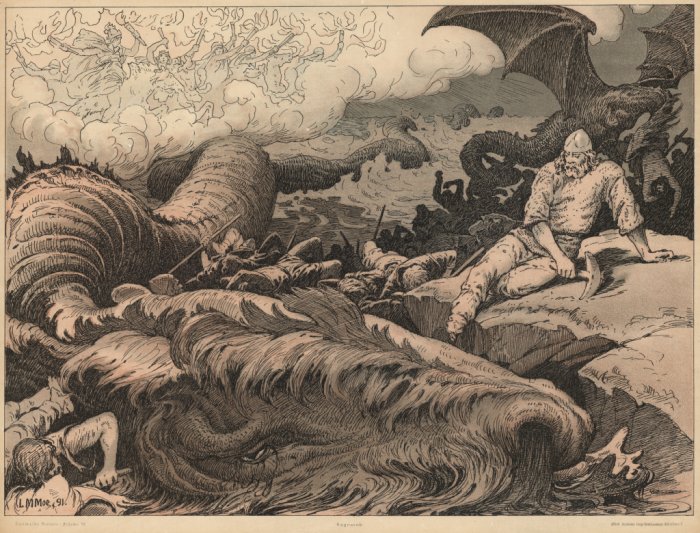Ragnarok In Norse Mythology – The Doom Of The Gods And Apocalyptic Record Of The Coming Comet
A. Sutherland - AncientPages.com - The concept of fate dominates Norse mythology, and to the Norse people, fate was a fact of life that could not be avoided or changed.
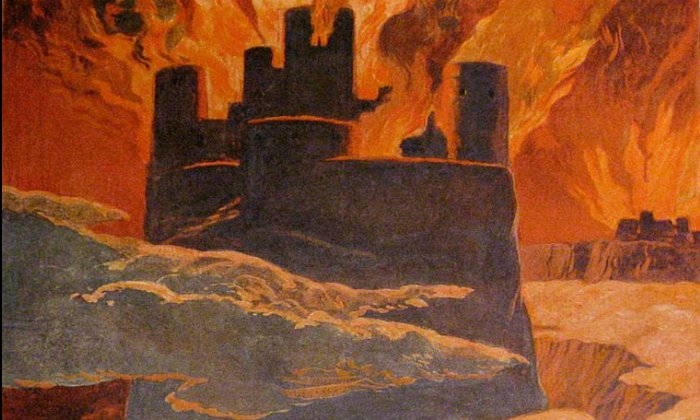 Carl Emil Doepler - Public Domain
Carl Emil Doepler - Public Domain
So, it had to be met without fear; even death, the ultimate end, must be encountered with braveness.
This immutable concept culminates in Ragnarok (Ragnarök) – “the darkness of the gods,” the coming destruction of the world, whose inevitability is impossible to fight with. It is a prophecy that holds profound implications for humanity’s future.
Ragnarok ragna means organizing powers (like gods), rok means fate or destiny, and the whole term refers to the gods. The gods – the protectors of humankind – knew of Ragnarok and prepared for it daily. The onset of Ragnarok could not be stopped.
It was preordained so precisely that the details of what would happen were already known to them.
Brothers will fight and kill each other, and sisters’ children will defile kinship. It is harsh in the world, whoredom rife-an ax age, a sword age-shields are riven- a wind age, a wolf age-before the world goes headlong. No man will have mercy on another…” (the “Elder Edda”)
The Eddas (1250) described Ragnarok as a collection of Old Norse poems. The world was to be destroyed by fire and water, with steam and flames reaching high heavens.
During Ragnarok, a colossal earthquake will cause devastation, mountains will be shaken, and the sun will disappear due to the clouds and smoke. Melting ice will cause floods of water to run alongside rivers of burning lava. Was this terrifying vision only inspired by volcanic eruptions or much more?
Ragnarok, a phenomenon from Norse mythology. Colour lithograh on paper, glued on cardboard. Signed lower left: L. M. Moe, 92. Text: Danmarks Historie i Billeder VII. Ragnarok. Alfred Jacobsens litogr. Etablissement, København K. Image credit: Louis Moe - AU Library, Campus Emdrup
All trees will be uprooted, though the Yggdrasill “(World Tree”) will remain standing. The ash Yggdrasill is the tree of life; the tree of the ancient tree worship; the tree which stands on the top of the pyramid in the island-birth place of the Aztec race; the tree referred to in the Hindoo legends.
It clearly is the vision of the Apocalypse as described by Snorri Sturluson in his famous Prose Edda (1222-23), who said that fierce battles would take place throughout the world for three terrible years.
A terrible winter will prevail, and three such winters will follow, with no summers.
Is the Ragnarok that originates in the legends of the Scandinavians a record of the coming of the Comet? It is what Ignatius Donnelly suggests in his famous work “Atlantis: The Antediluvian World.”
“But even in this early morn; Faintly foreshadowed was the dawn Of that fierce struggle, deadly shock; Which yet should end in Ragnarok; When Good and Evil, Death and Life; Beginning now, end then their strife.” Valhalla (J. C. Jones).
This great apocalyptic event that concerns humanity is mentioned in many myths and legends of different cultures worldwide. Ragnarok is an important event in the Scandinavian world of myths and legends. It has also been repeated generation after generation; translated into all languages; commented on, criticized, and debated repeatedly.
But even if Ragnarok (or Armageddon) was about universal disorder, destruction would not be total.
Afterward, the world will resurface as new and fertile. The surviving and returning gods will meet, and the world will be repopulated by two human survivors (in the myths of Scandinavia, by Lif and Lifthrasir, who will have remained hidden in the ash of the mighty tree Yggdrasill, through Ragnarok’s terrible time.
Thus the end will contain a new beginning, and the cycle will start again, as it always does. The world is once more saved, and Ragnarok is nothing but – the past!
Written by – A. Sutherland AncientPages.com Staff Writer
Updated on December 10, 2022
Copyright © AncientPages.com All rights reserved. This material may not be published, broadcast, rewritten or redistributed in whole or part without the express written permission of AncientPages.com
Expand for referencesReferences:
- Sutherland - Ragnarok In Norse Mythology – The Doom Of The Gods And Apocalyptic Record Of The Coming Comet - AncientPages.com
- Miles Peri - Norse Mythology: A Guide to Norse Mythology and Its Everlasting Effects on Culture
- Conny Waters - Vikings Feared Climate Change 1,200 Years Ago – Famous Rök Stone Reveals - AncientPages.com
More From Ancient Pages
-
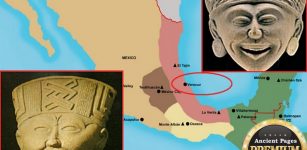 Curious Pre-Columbian Clay Figurines With Smiling Faces From Veracruz
Ancient Mysteries | Jan 29, 2018
Curious Pre-Columbian Clay Figurines With Smiling Faces From Veracruz
Ancient Mysteries | Jan 29, 2018 -
 Rare 4,500-Year-Old Stone Sculpture Of Canaanite Goddess Anat Found By Farmer In Gaza Strip
Archaeology | Apr 26, 2022
Rare 4,500-Year-Old Stone Sculpture Of Canaanite Goddess Anat Found By Farmer In Gaza Strip
Archaeology | Apr 26, 2022 -
 Discovery Of Half-Million-Year-Old Wooden Structure Shows We’re Wrong To Underestimate Our Ancient Relatives
Featured Stories | Oct 10, 2023
Discovery Of Half-Million-Year-Old Wooden Structure Shows We’re Wrong To Underestimate Our Ancient Relatives
Featured Stories | Oct 10, 2023 -
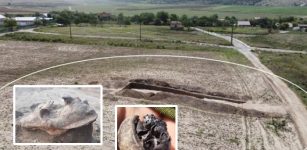 Archaeologists Make An Unusual Find In A 2,000-Year-Old Romanian Burial Mound
Archaeology | Jul 12, 2023
Archaeologists Make An Unusual Find In A 2,000-Year-Old Romanian Burial Mound
Archaeology | Jul 12, 2023 -
 Unusually Arranged Skeletons And Artifacts Found Inside A 1,500-Year-Old Tomb In Berenice Troglodytica, Egypt
News | May 27, 2022
Unusually Arranged Skeletons And Artifacts Found Inside A 1,500-Year-Old Tomb In Berenice Troglodytica, Egypt
News | May 27, 2022 -
 1,900-Year-Old Child’s Nightgown Found In Judean Cave Of Letters
Archaeology | Oct 5, 2023
1,900-Year-Old Child’s Nightgown Found In Judean Cave Of Letters
Archaeology | Oct 5, 2023 -
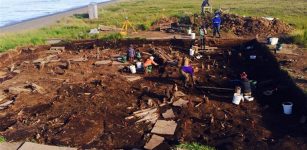 Archaeologists uncover new Yup’ik artifacts near Quinhagak, Southwest Alaska
Artifacts | Aug 28, 2015
Archaeologists uncover new Yup’ik artifacts near Quinhagak, Southwest Alaska
Artifacts | Aug 28, 2015 -
 Mythical Shield-Maidens Did Exist – Evidence Of Female Viking Warriors Discovered
Archaeology | Sep 9, 2017
Mythical Shield-Maidens Did Exist – Evidence Of Female Viking Warriors Discovered
Archaeology | Sep 9, 2017 -
 Evolution Of Tree Roots Led To Ancient Mass Extinctions – Geologists Say
Archaeology | Nov 11, 2022
Evolution Of Tree Roots Led To Ancient Mass Extinctions – Geologists Say
Archaeology | Nov 11, 2022 -
 Eastern Necropolis Of Ancient Thracian And Roman City Of Serdica – Unearthed
Archaeology | Apr 10, 2017
Eastern Necropolis Of Ancient Thracian And Roman City Of Serdica – Unearthed
Archaeology | Apr 10, 2017 -
 How Did Indus Civilization Manage To Resist Climate Change?
Archaeology | Feb 22, 2017
How Did Indus Civilization Manage To Resist Climate Change?
Archaeology | Feb 22, 2017 -
 World’s Oldest Wine Found In 2,000-Year-Old Roman Tomb In Carmona, Spain
Archaeology | Jun 19, 2024
World’s Oldest Wine Found In 2,000-Year-Old Roman Tomb In Carmona, Spain
Archaeology | Jun 19, 2024 -
 Amazing Victorian Time Capsule – 135-Year-Old Message In A Bottle Found In Edinburgh
Archaeology | Nov 22, 2022
Amazing Victorian Time Capsule – 135-Year-Old Message In A Bottle Found In Edinburgh
Archaeology | Nov 22, 2022 -
 Armenians’ Origin Theory By Herodotus Debunked By New DNA Study
DNA | Nov 27, 2024
Armenians’ Origin Theory By Herodotus Debunked By New DNA Study
DNA | Nov 27, 2024 -
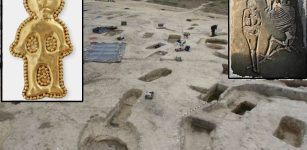 Ancient DNA And Historical Context Were Used To Explain Kinship, Social Practices Of Avar Society
Archaeology | Apr 25, 2024
Ancient DNA And Historical Context Were Used To Explain Kinship, Social Practices Of Avar Society
Archaeology | Apr 25, 2024 -
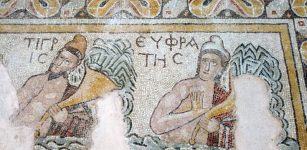 More Beautiful Mosaics In The Ancient City Of Hadrianopolis In Northern Turkey
Archaeology | Sep 28, 2022
More Beautiful Mosaics In The Ancient City Of Hadrianopolis In Northern Turkey
Archaeology | Sep 28, 2022 -
 Utnapishtim And The Babylonian Flood Story
Featured Stories | Jan 28, 2016
Utnapishtim And The Babylonian Flood Story
Featured Stories | Jan 28, 2016 -
 Ancient Roman Altarpieces Deciphered And New Roman Goddess Uncovered In The Netherlands
Archaeology | Jun 18, 2024
Ancient Roman Altarpieces Deciphered And New Roman Goddess Uncovered In The Netherlands
Archaeology | Jun 18, 2024 -
 Unexpected Discovery Of Europe’s Oldest Vanilla Pod In Prague Castle – Was It Used For Alchemical Experiments?
Archaeology | Apr 8, 2025
Unexpected Discovery Of Europe’s Oldest Vanilla Pod In Prague Castle – Was It Used For Alchemical Experiments?
Archaeology | Apr 8, 2025 -
 Legacy Of Queen Hatshepsut’s Temple In Luxor – New Valuable Finds Announced
Archaeology | Jan 9, 2025
Legacy Of Queen Hatshepsut’s Temple In Luxor – New Valuable Finds Announced
Archaeology | Jan 9, 2025

